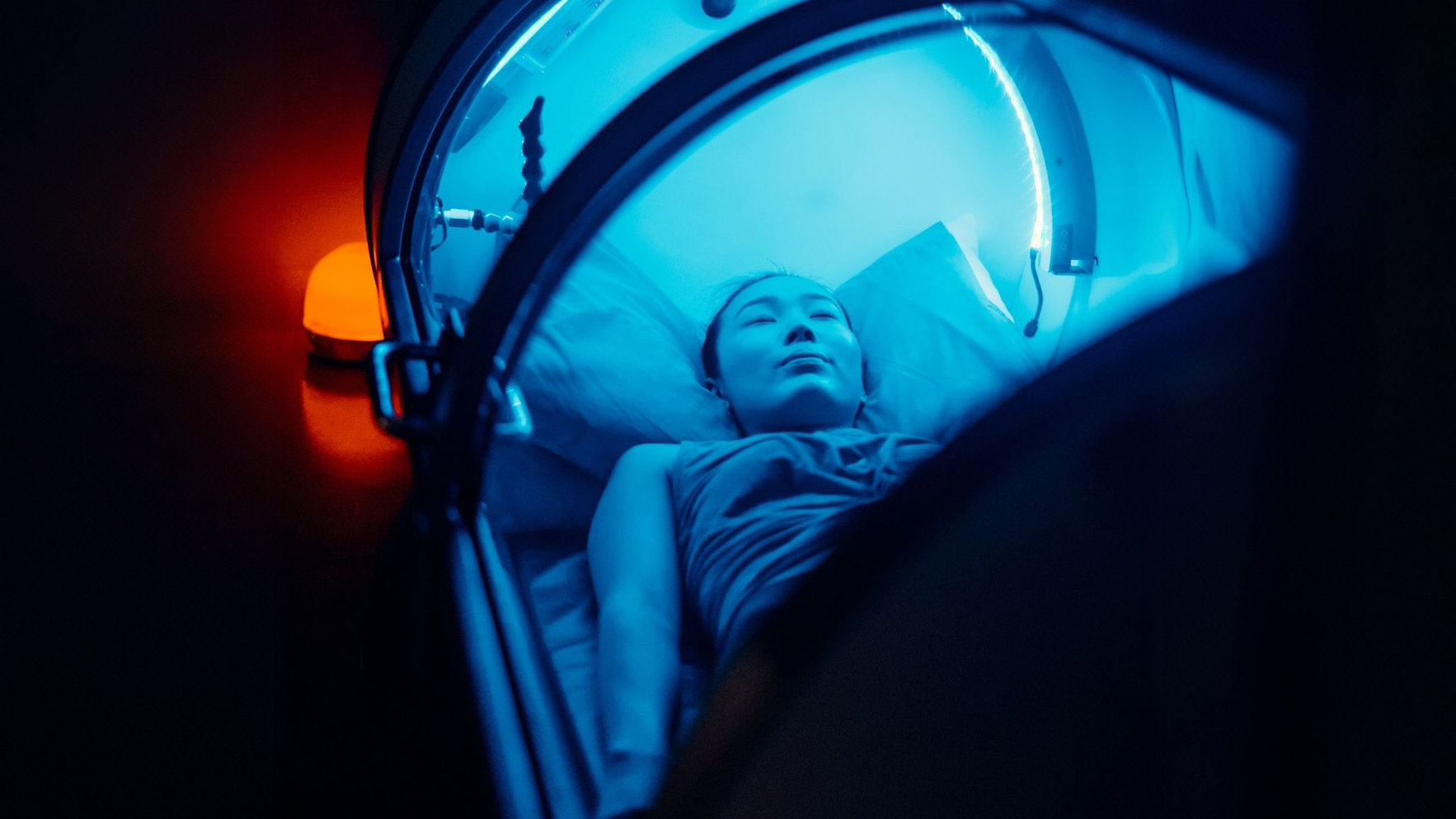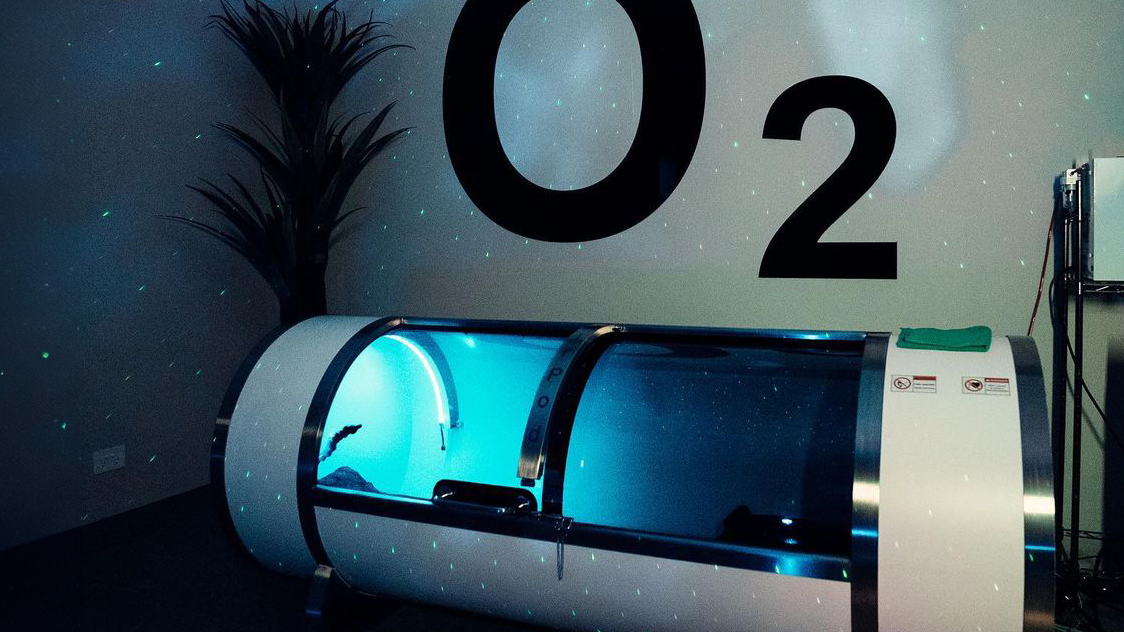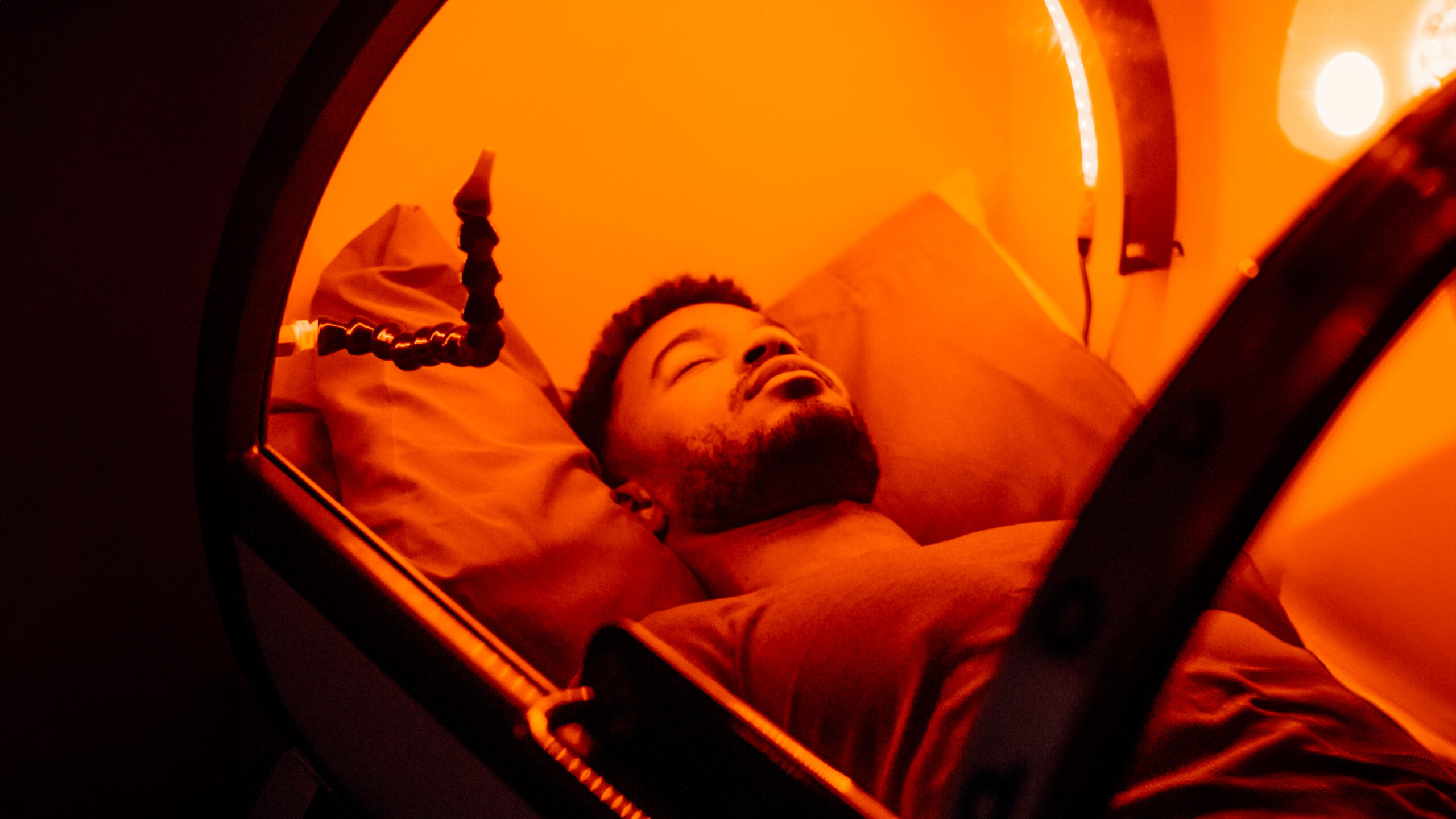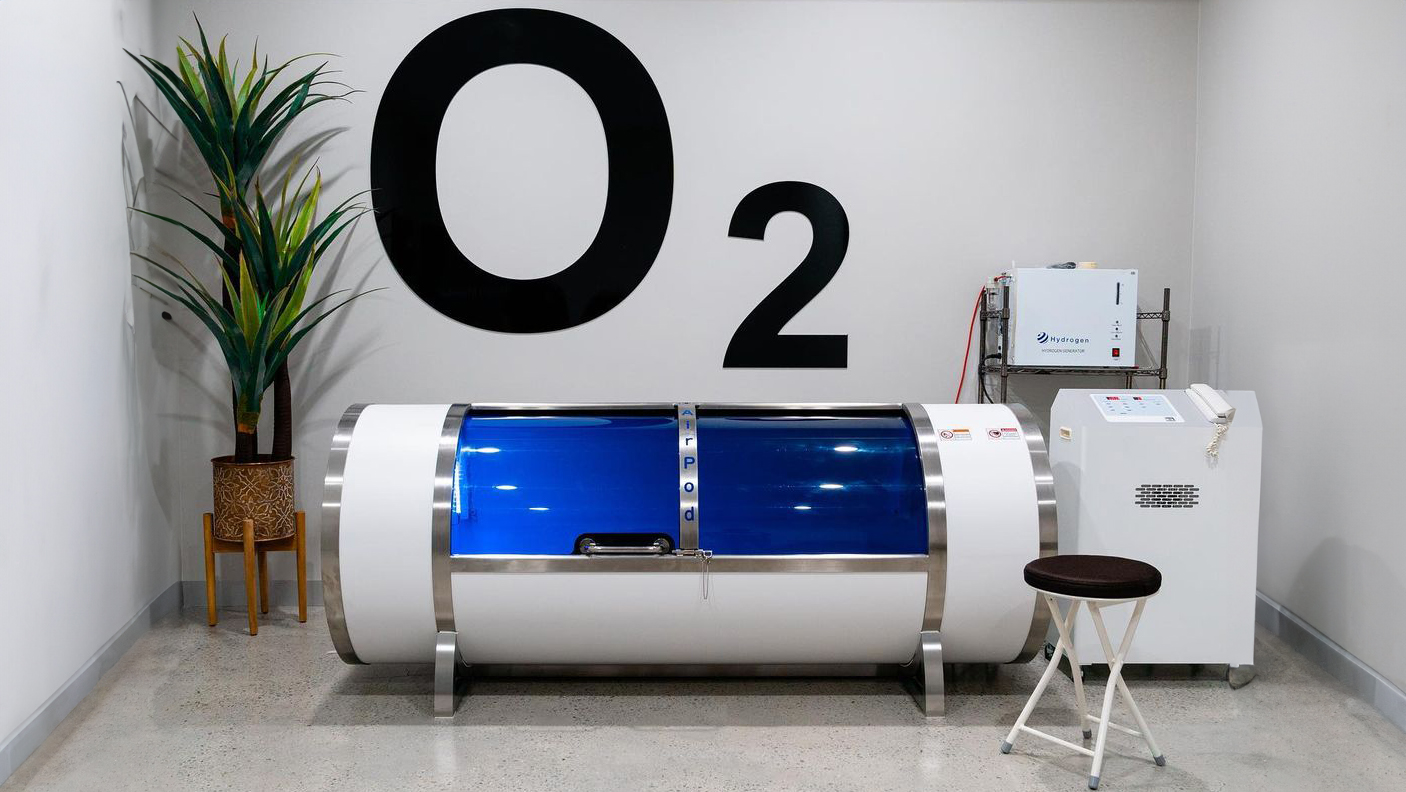EXPERIENCE NEX LEVEL FITNESS
Hyperbaric Chamber

UNLOCKING THE HEALTH BENEFITS OF HYPERBARIC CHAMBER:
How It Functions
For your body:
Hyperbaric Oxygen Therapy stands as a pinnacle in health innovation, offering a sophisticated approach to enhancing oxygen absorption. This method administers oxygen at elevated concentrations across the body, reaching beyond red blood cells to saturate all bodily fluids, including plasma, the central nervous system, bones, and lymph fluids.
The enrichment of blood cells with oxygen boosts the body’s ability to combat bacteria (thus bolstering immunity), diminish inflammation, and rejuvenate the skin’s look. Moreover, this oxygen-rich blood is more efficiently transported to areas of injury or damage with compromised blood flow, facilitating quicker healing.
This therapy’s provision of heightened oxygen levels throughout the body not only revitalises skin but also improves mobility, presenting a counteracting force to aging effects.
For Your Mind
The everyday stress and anxiety can limit the oxygen supply to your brain. Oxygen Therapy amplifies the oxygen and blood circulation to your brain, resulting in a noticeable uplift in energy levels, memory, and mood, while markedly diminishing mental fog.
Benefits of Hyperbaric Chamber
A hyperbaric chamber is a highly specialized medical device that provides hyperbaric oxygen therapy (HBOT), a treatment in which patients breathe pure oxygen in a pressurized environment. Regular use of a hyperbaric chamber can offer a multitude of health benefits. It significantly increases the amount of oxygen dissolved in the body’s tissues, enhancing the body’s natural healing processes. This increased oxygen supply can accelerate the healing of wounds, especially in cases of diabetic foot ulcers, radiation injuries, and infections where blood supply is reduced. Regular sessions in a hyperbaric chamber have also been shown to improve the recovery from traumatic brain injuries, aid in the treatment of certain types of infections, and potentially reduce the size of gas bubbles trapped in the blood, a condition known as decompression sickness. Furthermore, the therapy is credited with improving the quality of life for patients with conditions such as fibromyalgia and chronic fatigue syndrome by reducing inflammation and enhancing mitochondrial function. As a non-invasive and safe treatment option, HBOT has become a valuable adjunctive therapy for a wide range of medical conditions, promoting faster recovery and overall well-being.
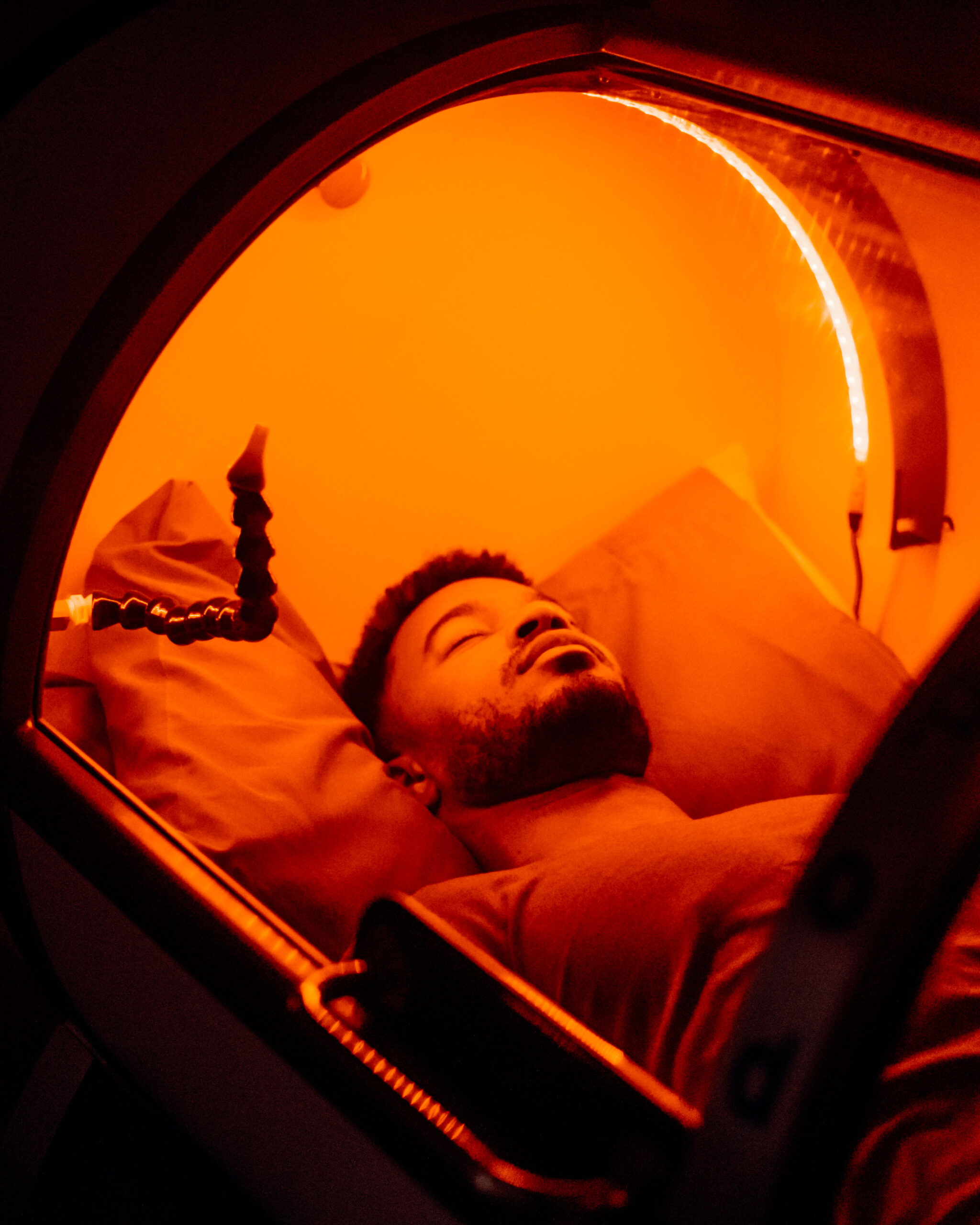
Benefits of Hyperbaric chamber:
- Enhanced Wound Healing: HBOT accelerates the healing process of wounds, especially those that are slow to heal due to diabetes or radiation injury, by increasing oxygen supply and stimulating the formation of new blood vessels.
- Improved Infection Control: The high levels of oxygen delivered during therapy can help kill certain types of bacteria and fungi, reducing the risk of infections and aiding in the treatment of existing infections.
- Reduction in Inflammation: HBOT has anti-inflammatory effects that can alleviate pain and swelling, making it beneficial for conditions such as inflammatory diseases and sports injuries.
- Boosts Oxygen Rich Cells: Hyperbaric oxygen therapy increase the amount of oxygen your blood can carry. With repeated scheduled treatments, the temporary extra high oxygen level encourage normal tissue oxygen level, even after the therapy is completed.
- Reduces Fatigue: Hyperbaric oxygen decreases the severity the quality of chronic fatigue patients. Its is suggested that it could be a new treatment modality for the management of chronic fatigue.
- Improved Circulation and Cardiovascular Health: By promoting the formation of new blood vessels (angiogenesis), HBOT improves circulation, which can benefit heart health and the overall oxygenation of tissues throughout the body.
- Boosted Immune Response: The therapy can strengthen the immune system by enhancing the ability of white blood cells to fight infection and disease.
FAQ
You Ask ?
We Answered!
What is a hyperbaric chamber and how does it work?
A hyperbaric chamber is a medical device that delivers hyperbaric oxygen therapy (HBOT). During a session, the patient enters a specially designed chamber to breathe 100% oxygen at a pressure higher than atmospheric pressure. This process increases the oxygen saturation in the body’s tissues, which can accelerate healing and improve the efficiency of the body’s natural healing processes.
How often should you do hyperbaric oxygen therapy?
There’s no limit to how often you can do oxygen therapy, however, the regularity of your sessions will be heavily dependent on your different health and wellbeing goals.
For instance, people looking to boost their energy and reduce brain fog should see results from using this treatment 2-3 times per week. However, people recovering from injury (e.g. post-surgery) are encouraged to use this treatment as much as possible during rehabilitation as increased oxygen intake enhances your body’s own healing process and helps to repair damaged tissues.
Is hyperbaric oxygen therapy good for you?
Research has shown that hyperbaric oxygen therapy increases oxygenation to the body’s tissues, increases blood flow and circulation, boosts white blood cell counts, enhances the effectiveness of antibiotics and reduces swelling and pain.
How long does a hyperbaric oxygen therapy session last?
A typical hyperbaric oxygen therapy session lasts between 60 and 90 minutes, depending on the condition being treated and the specific protocol recommended by the healthcare provider. The total number of sessions required can vary widely based on the patient’s individual health needs and the nature of the condition being addressed.
Start 2025 RIGHT
Let’s set up a time for you to pop in and get a feel for what we’re all about.
